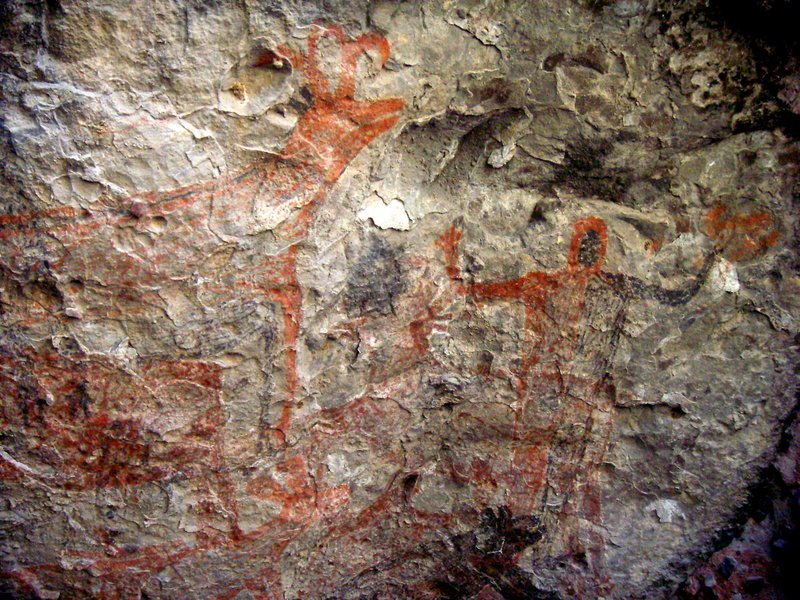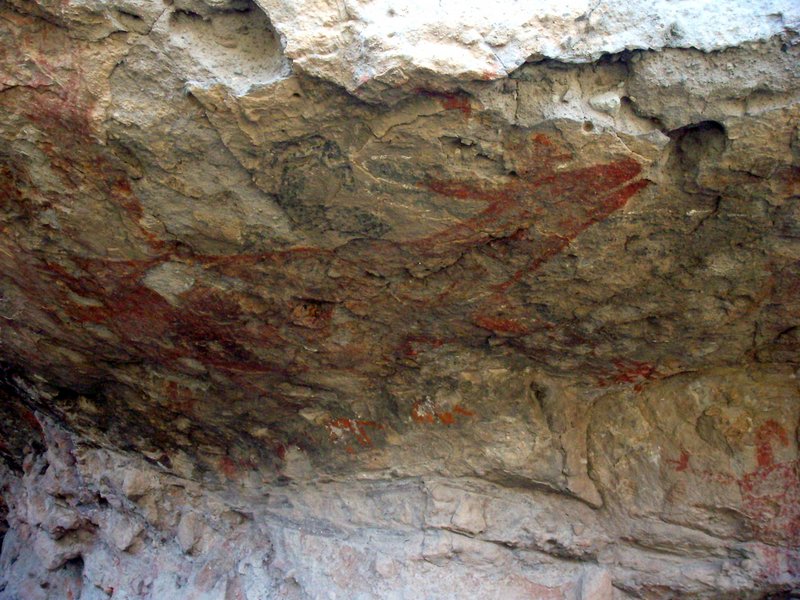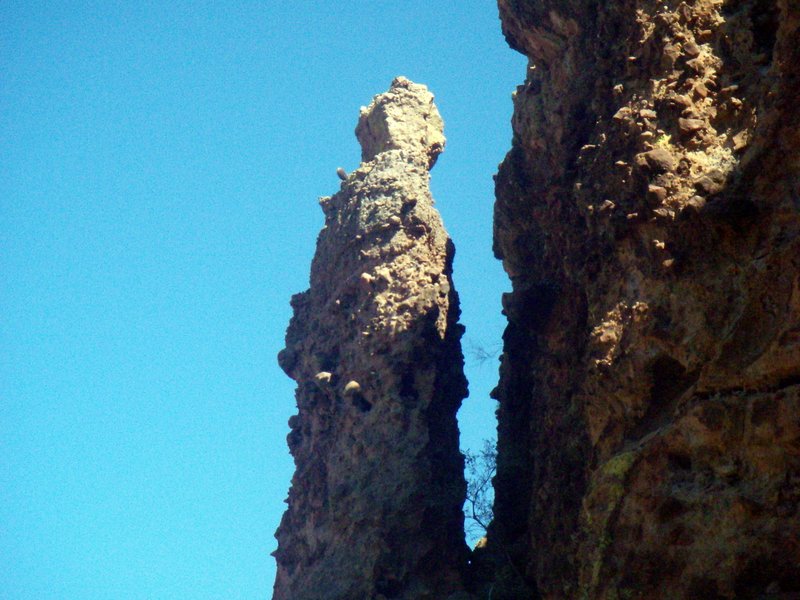From El Vallecito, in the mountains near the current border with the USA, all the way down to La Trinidad in the Sierra de Guadalupe in Baja California Sur, rock art sites can be found. The most important area of all is the Sierra de San Francisco in the El Vizcaíno Biosphere Reserve, which contains several hundred sites - its importance lead to its inscription as a UNESCO World Heritage Site in 1993. Thought to be the handiwork of the now sadly extinct Cochimí people of the central peninsula, their existence was first noted by Europeans in the late eighteenth century, though it wasn't until the work of Erle Stanley Gardner, Harry W. Crosby and others two centuries later that the area came to international prominence.
The Sierra itself is an isolated area, even by the general standards of the peninsula, and a visit requires a detour of 23 miles (37km) from the transpeninsular highway up into the range, only the first third of which is on a paved road. You need to be in an all terrain vehicle to make it to even the most accessible of all the sites "Cueva del Ratón" ("The Mouse Cave"), which is about 90 minutes from Mex 1.
The views on the way up are spectacular, with the mountains above and the Vizcaíno Desert extending towards San Ignacio below. When you reach El Ratón you need to continue upwards for another couple of miles to sign in at the Buenaventura Hostel before being granted access to any of the sites, which are kept under lock and key by the Sierra's appointed rancheros, under the auspices of the INAH (National Institute of Archaeology and History).
Once signed in, a ranchero will accompany you back down the track to El Ratón to open the gate to allow access to the 1990s-built wooden viewing platforms. These give an excellent view at close range of a remarkable collection of images. Giant representations of humans and animals in red and black adorn the walls. When the Jesuit Francisco Javier Clavijero enquired to the local Cochimí as to the origins of the paintings he was told that they'd been done by giants, and it's easy to see how that belief took hold.
There are deer, sheep, rabbits and a mountain lion amongst the humans. The ancient pictures aren't always immediately apparent to the viewer, so take a few minutes to focus on a particular area, and the image will slowly take form. El Ratón really is the tip of the iceberg when it comes to rock art in the Sierra - if you have a number of days at your disposal you can venture accompanied into the canyons below to view such sites as La Pintada and Las Flechas, but these journeys can only be conducted with a great deal of planning. Further information can be found at sierrasanfrancisco.com.
Another great attraction for the visitor to the sierra is the wealth of petroglyphs which can be found - remarkable rock carvings by prehistoric people, the meanings of which are often lost in the mists of time.
The Sierra de San Francisco is a remarkable and unique place.
Visit our home page for news about our transpeninsular tours.



















